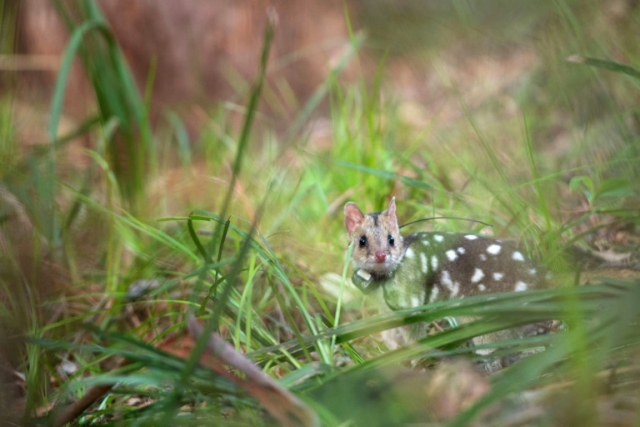Spotted marsupial returned to mainland Australia after half century

The eastern quoll has been re-introduced to the east coast of Australia after a 15-year project to bring feral predators in one area under control. Image: Morgan Cardiff / WWF-Australia/AFP
A species of spotted marsupial devastated by foxes has been returned to the wild in mainland Australia for the first time in almost 50 years in a rare and landmark conservation success story.
The eastern quoll — a furry carnivore about the size of a domestic cat — disappeared from the mainland in the 1960s but clung on in the island state of Tasmania.
They have now been re-introduced to their native environment on the country’s east coast after a 15-year project to bring feral predators in one area under control.
Twenty of the cute critters were released into the Booderee National Park, south of Sydney, this week.
“This is the first time in Australia that a carnivore extinct on the mainland has been re-introduced to the wild,” World Wildlife Fund Australia’s head of living ecosystems Darren Grover said Thursday.
“Most of the carnivores lost from the mainland are gone forever, it’s not possible to bring them back, so this is a rare opportunity.
“For thousands of years eastern quolls played a part in the ecosystem as primarily insect-eaters. It will be fascinating to see what happens when they return to that role at Booderee.”
Australian National University researcher Natasha Robinson said the quolls, which tend to live alone, had been fitted with GPS collars so their progress could be closely monitored.
“Over the next three months the eastern quolls will be intensively monitored via GPS tracking and then regularly monitored over three years,” she said.
“Foxes, both outside and entering the park will also be monitored and managed with the aim of ensuring fox incursion to the park is very limited.
“This will help us understand how resilient the eastern quolls can be to very low densities of feral predators in the landscape.”
Large numbers of eastern quolls were killed in the early 1900s by a mysterious epidemic, and their population was then devastated as foxes spread across south-eastern Australia.
They were last regularly seen in the 1960s in the Sydney region. AB
RELATED STORIES:
Biologists turn to citizens, DNA to count urban Alaska moose
China plans panda park that will dwarf Yellowstone